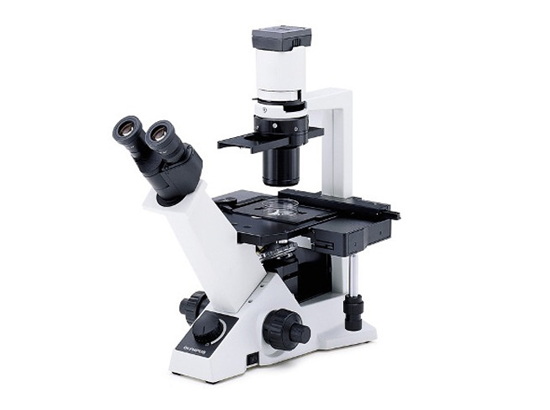Inverted microscopes have both the light source and condenser set up high above the stage and pointing down toward the stage, while the objectives and objective turret are located beneath the stage pointing up. The two basic types of inverted microscopes include biological inverted microscopes and metallurgical inverted microscopes.
Biological inverted microscopes are used to observe living cells or organisms at the bottom of a petri dish or tissue culture flask. Live cell analysis is accomplished because larger containers of liquid provide more natural conditions for specimens than a small glass slide where the sample is squished between the slide and coverslip, as when samples are viewed under a traditional upright biological microscope. Biological inverted microscopes provide brightfield, phase contrast, or epifluorescence.
Metallurgical inverted microscopes are used to view metal or solid objects that don’t allow light to pass through them and are too large to place under an upright metallurgical microscope. Metallurgical microscopes provide room for micromanipulation applications where space for a manipulator mechanism or tool is required.

